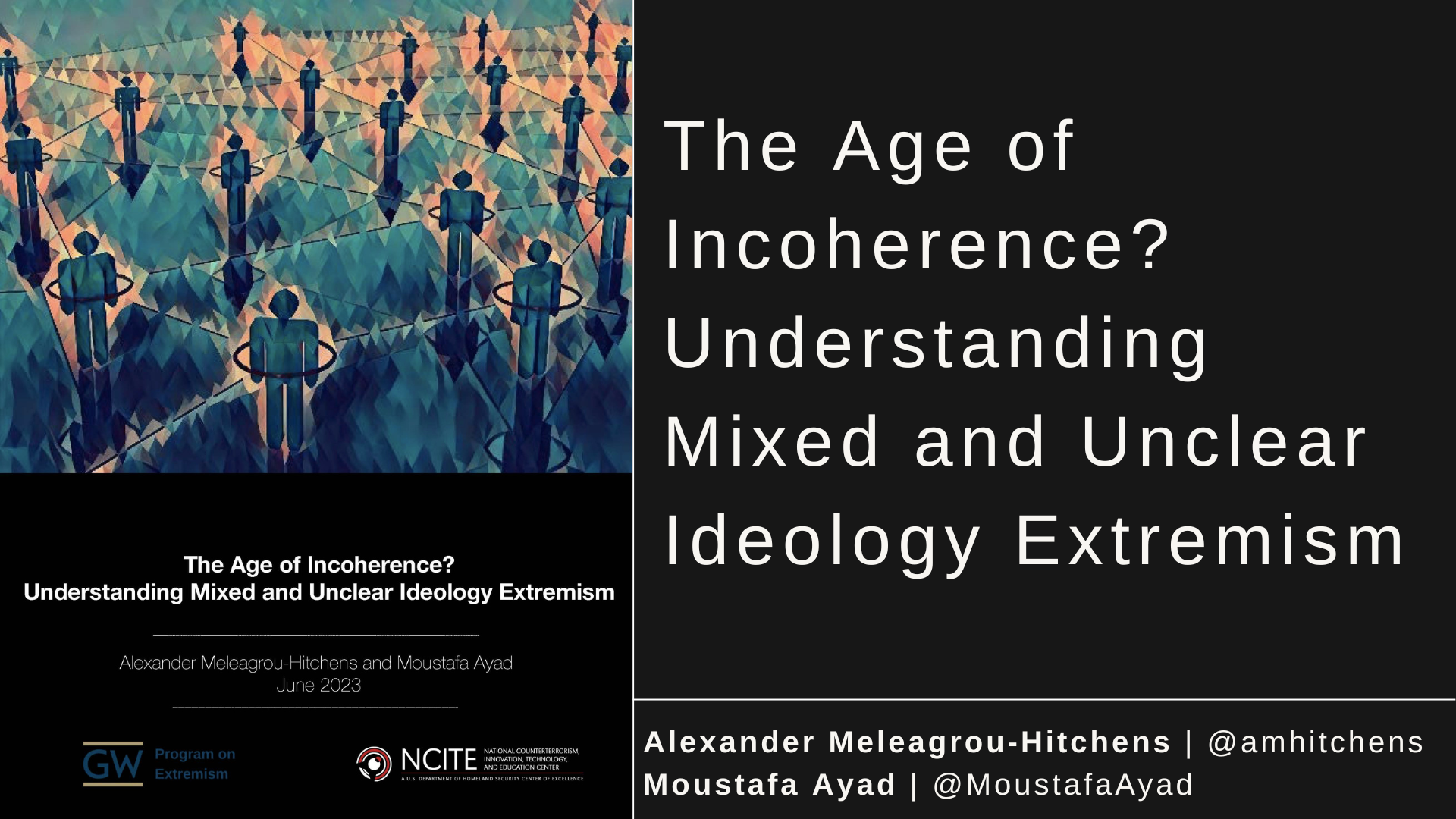In May 2019, the Federal Bureau of Investigation (FBI) issued an intelligence bulletin which included one of the first official acknowledgments of what they and other similar agencies in the West identified as an emerging violent extremist threat. It warned that “anti-government, identity-based, and fringe political conspiracy theories” were playing an increasing role in motivating domestic extremists to commit criminal, sometimes violent, acts. Since then, officials have also noted the emergence of individuals acting on the basis of “salad bar ideology” extremism, a term used in 2020 by FBI Director Christopher Wray to describe the nature of some of the recent violent extremist threats. Their ideologies, according to Director Wray, “are kind of a jumble…a mixture of ideologies that don’t fit together.” He went on to say that some extremists “take a mish mash of different kinds of ideologies often that don’t fit coherently together, and sometimes are even in tension with each other, and mix them together with some kind of personal grievance,” to justify their attack. Director Wray concluded that “it’s more about the violence than it is about the ideology.”
Academics and analysts have also warned of the emergence of “ideological convergence,” coining the term “fringe fluidity” to describe those who transition from one extremist ideology to another, or who take inspiration from a “salad bar [of] ideologies” as first identified by Director Wray. There are a number of suggestions as to the cause of “fringe fluidity”, including shared beliefs across ideologies like jihadism and white supremacism, the wide accessibility of extremist ideologies online that appeal to individuals seeking purpose and belonging, and the increased popularity of the lone-actor “leaderless” model of violent extremism. This development is directly linked to the question of mixed or unclear ideological violence. To maintain control and ideological purity, formal groups tend to police the ideas and affiliations of their members, often leaving little room for them to engage with the ideas of alternative or rival movements. As formal group affiliation has reduced in importance for terrorist actors, so have the barriers to engagement with other relevant, and often overlapping, ideologies. Extremists today have more freedom to merge ideas from different extremist currents which may often share a number of key interests and concerns.
The first category suggested by the authors is the constantly evolving overlap between extreme right-wing and various iterations of extremist Islamist ideologies. There are signs of significant ideological, linguistic, and aesthetic overlap between these movements, both online and among some recent terror cases in the U.S. However, the nature of this mixing of ideologies is not random or incoherent – they both share similar reactionary and virulently anti-liberal politics and wish to take part in the unraveling of liberalism around the world. This section will draw on a corpus of 5,467 memes and 3,524 videos from Facebook, Instagram, Reddit, and Twitter, as well as messaging-based applications such as the encrypted platform Telegram and the closed platform Discord, to show how far-right white nationalists are appropriating jihadist tactics and rationale, such as fiqh al-dima, or the jurisprudence of blood, and Salafi-jihadists are appropriating the language and aesthetics of Neo-Nazis and far-right trolls, referring to themselves as National-Socialist Salafis.
The second category of extremist activity which we argue fits into the mixed and unclear phenomenon is what we term “conspiracy extremism,” which appears to be both novel and on the increase as highlighted by the FBI in 2019. Because this type of extremism lacks clear ideological underpinnings, it attracts people from a wide range of social and political backgrounds and is therefore, easily adopted by a range of actors. Despite this, the conspiracy theories which have driven the most acts of violence and criminality in the U.S. over the last decade often overlap with right-wing concerns, including animosity and distrust towards what is considered the “liberal establishment” in media, science, and politics. Drawing on a unique database of incidents of conspiracy extremism-driven violence and criminality, this section will contribute quantitatively to understanding this phenomenon in the U.S. and analyze how to understand the motivations of those engaging in it.


